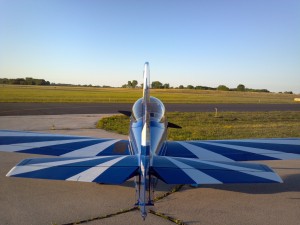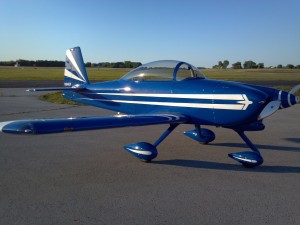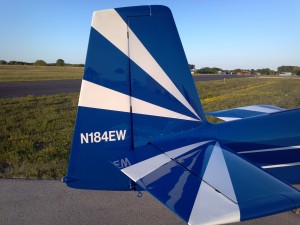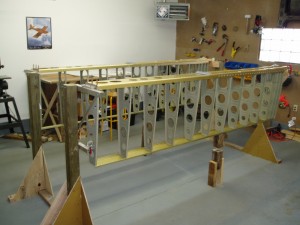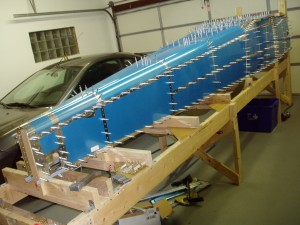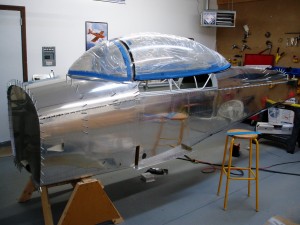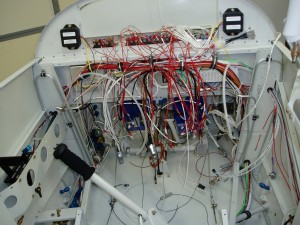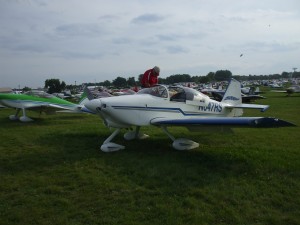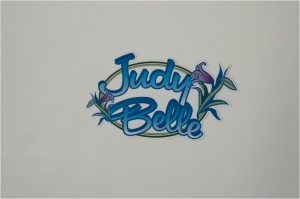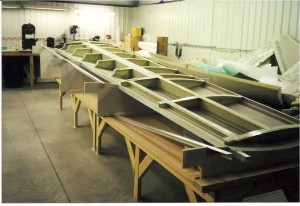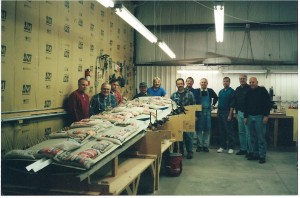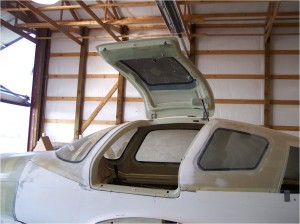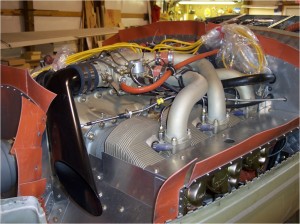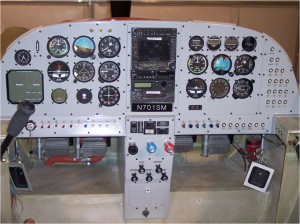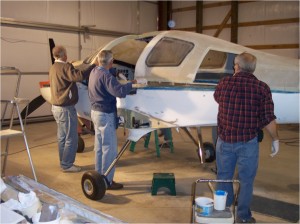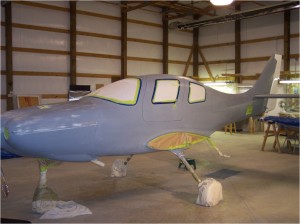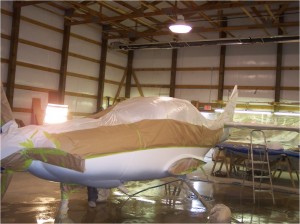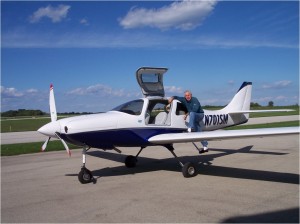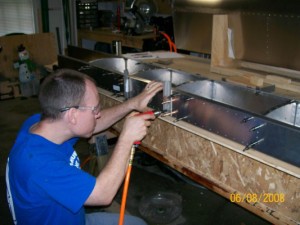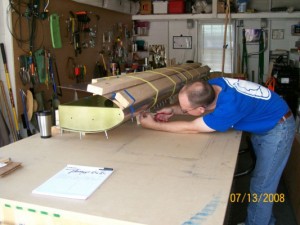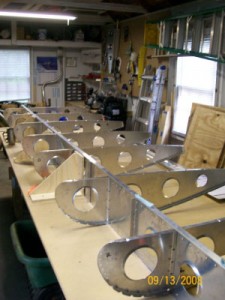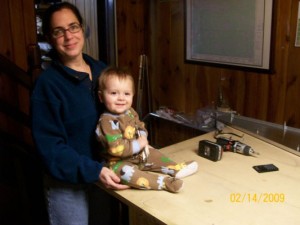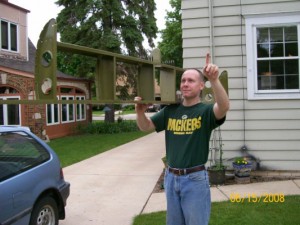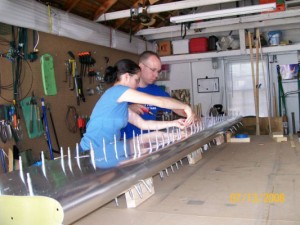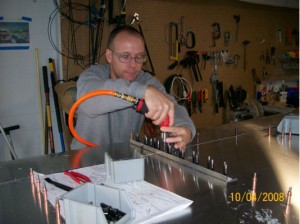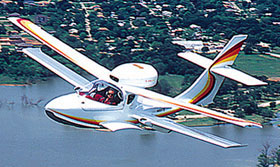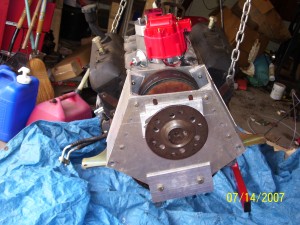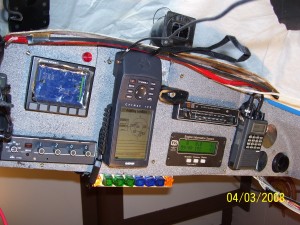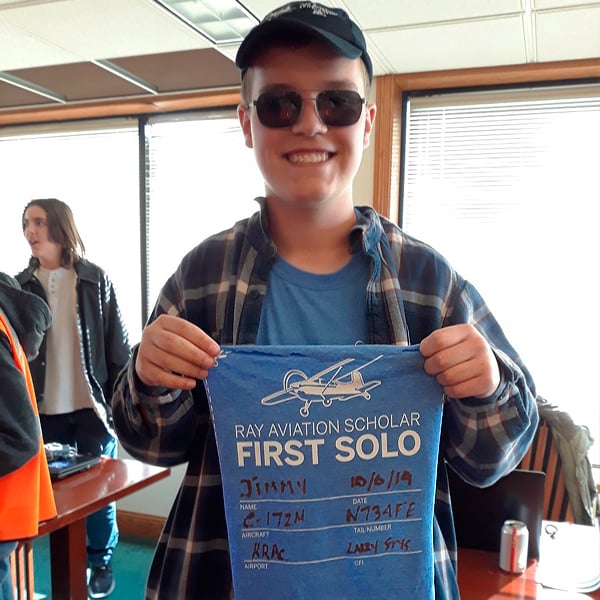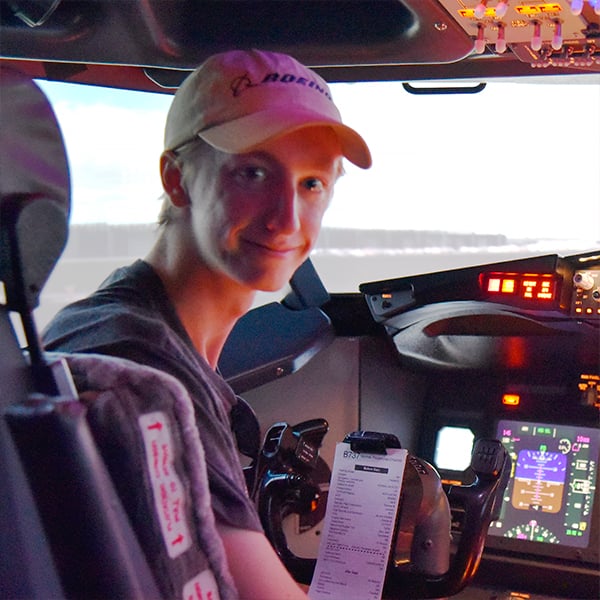Builder's ProjectsCompleted Aircraft Builder: Eric Wolf I was always interested in airplanes as a kid. I built two radio controlled airplanes in high school and later two more after college. The last R/C airplane I built was a 1/5 scale Skybolt with a smoke system. I wanted to build another R/C airplane, but knowing me, I would have to build something bigger, flashier, and more complex. I figured that if I was going to spend more time and money on an airplane, I may as well be sitting in it. I was living in an apartment at the time and the airplane project drove me to buy a house with a garage and learn how to fly. I researched the designs that were out there and I determined that Van’s Aircraft had just the type of sport aircraft that I desired. Plus, they offered a nice kit and had good builder support. I settled on the RV-8A because I liked the fighter-like feel of centerline seating and the bubble canopy. I picked the tricycle gear (‘A’-model) configuration because that is what I was familiar with. I started construction of my RV-8A in January 2004 soon after receiving a private pilot certificate. I mostly taught myself what I needed to know throughout the building process. Virtually all construction occurred in my two car garage. I found building to be rather enjoyable with the opportunity to learn about many facets of aircraft construction. After 5 years of construction, it was moved to the EAA838 chapter museum in January of 2009 for final assembly. The wings were assembled and finishing work completed in April. First flight occurred on the morning of May 3, 2009. To my surprise, the airplane required no trim corrections. After working through a few bugs, the airplane proved to be a real performer, cruising at 177 knots (203 mph) at 75% power at 7500’. Everything else is typical RV: rocketing takeoffs and climb, good short field capabilities, and superb handling. It is powered by a 180 HP IOF-360 from Mattituck and a Whirlwind constant speed propeller. It is equipped for day/night VFR and has several modern devices such as a FADEC system, Trutrak ADI Autopilot, Advanced Flight System EFIS, and Angle of Attack meter. After three years of flying it with no paint, I had Central Aviation paint it in June 2012.
Older construction photos:
Builder: Ralph Skorupa My RV6A was completed in 1997 after 8 yrs of construction. I flew to OSH for the convention after it was finished and again in 2010 to commemorate the 1000 hr mark on the Hobbs meter. Over the 13 years the plane has been flying it has been as far south as central Florida, west to Jackson, WY and north to Alaska. This 150 HP aircraft cruises at 152 Kts. at 8000 ft. burning 7.5 gallons per hour. I got my pilots license because I wanted to build a plane and the gal I married had the good sense to suggest that a pilots license might be a good idea. That is how I got started flying. Flying and building have provided a great feeling of accomplishment. Builder: Daryl Lueck Builder: Bill Wolff Builder: Steve Myers Steve Myers is a former Navy pilot and Lockheed Engineering Test pilot. After he retired, he returned to Racine, his home town, resumed flying after a lengthy layoff and joined EAA Chapter 838. He spent a portion of his Lockheed career working in the program management, manufacturing and quality assurance fields. Those experiences left him with a nagging, if ill-defined, desire to build his own airplane. Soon after returning to Racine, the “build your own kit airplane” bug bit him and he spent almost a whole year exploring home built aircraft options. He finally selected the Lancair Super ES, a four place, a fixed gear, composite kit aircraft powered by a 310 HP Continental IO-550 engine. He started the building process in a small rented shop in 1999. In 2000, he moved to a hangar he purchased at Racine’s Batten Airport. He decided early on that he would name the aircraft “Judy Belle” as a thank you to his wife Judy for going along with this demanding project. Steve worked mostly alone. However, when extra “know-how, muscle or manpower” were needed, Chapter members and other friends were always available to provide the necessary assistance. “I couldn’t have done it without their help,” he says. The completed aircraft received its FAA Airworthiness Certificate in August, 2007 and flew for the first time a month later. Steve recalls flying that first flight as one of the biggest thrills and most gratifying experiences of his life. However, as any home-builder will tell you, no home-built airplane is ever quite finished. It seems that there is always something to change, improve or replace. Looking back, he readily admits that his building process was chronically “behind schedule and over budget,” a situation that Judy says would have had him fired if it occurred during a project he managed during his working career at Lockheed. “She’s right about that,” he notes. Although his Lancair ES project was more time consuming and costly than expected, Steve still remembers it as a self-satisfying, enjoyable and fulfilling experience. He kept a detailed daily log that documented progress, problems and solutions, as well as the building hours spent each day. These logs now fill four 3-ring binders. Builder: Doug Doers Projects Builder: Ben Church I started building a Zenith CH-801 4-place STOL airplane in 2008 and am about 0.3% done (tail, most of the wings, and part of the rear fuse). My eldest brother (Maj Robert Church) and I decided to partner for this project. We both liked the short/rough field performance, 1000+ lb useful load, and all-metal construction of the 801. With a 100 mph cruise, we’re not looking to get anyplace fast! We have dreams of floats and landing at the family cabin in the wilderness of Ontario or quick visits to our parents in Michigan (5Y0). The building process has been very enjoyable. Unfortunately, a new career as a professor in Materials Engineering at UW-Milwaukee has slowed things down a bit but I still manage to get a few hours of work in per month. Breaks between semesters and the summer months see more progress. The neighborhood kids ask me each and every weekend if I’m done yet and can take them flying… Realistically I think I have “several” years to go but so far the neighborhood kids refuse to believe it should take me any longer than a couple more weekends! Builder: Wayne Peach The plane I'm building is a two-place, biplane, amphibian called a Sea Hawker. In its latest kit form it is called a Glass Goose. I never really had a great desire to own an amphibian but someone made me "a deal I couldn't refuse." I purchased a complete Sea Hawker kit plus an 0-320 engine with less than 2 hours on it, and a complete panel except for radios and three sets of plans for other aircraft. The price was less than a fourth of the cost of the basic airplane kit. The original Sea Hawker had some significant design problems. It's fuel tanks would not vent when the level got below half a tank, the top wing came off three planes in flight, (everyone was able to safely fly the plane to the ground.), and it had a yaw problem on final. A dedicated group of builders have addressed and corrected the problems. My plane incorporates the modifications. I choose not to use the 0-320. It was a narrow deck engine and I mistakenly thought that it could have its horsepower boosted to 160 hp. The Sea Hawker needs at least 160 hp to get off the water at gross. Since I had built an auto conversion from scratch for my first plane, I decided to convert a Chevy 4.3 V6 for this plane. The conversion should produce between 180 and 200 hp. An auto conversion is heavier but I have 900 lbs of useful load to deal with so I don't think I'll be hurting for payload capacity. The name I've chosen for my plane is the "Frugal Fowl." I build on a tight budget. In fact, after I sold the 0-320 and a couple of the extra plans, I had only about $2000 into the plane, including the engine. That total took a significant jump recently when I put a Dynon EFIS into the plane. I took out 27.5 pounds of vacuum gauges and pumps and replaced it with the 1.5 pound Dynon. In order to keep costs down I scratch build everything that I can which included the propeller reduction drive. The kit, coming out of the 80's is closer to being a scratch build airplane as compared to today's kit. When the plane is ready for flight it will be equipped with a Dynon EFIS, a Grand Rapids Technology Engine Monitor, one nav, one comm, a panel mounted Garmin 195 GPS, a King transponder with encoder and an audio panel. To make sure there are enough electrons for safety the plane is equipped with a 90 amp alternator, two batteries that are isolated from each other and an essential bus wiring system. When will the plane fly? Only when it is ready! Several of us who are building the same type of planes have a date to meet at Oshkosh 2012. I hope to have mine flowing sooner than that but then again, I thought I would be flying by the end of this summer. Picture one: What the plane should look like when it is done. (That's not my plane.) Builder: Roy Stuart Builder: Jerry Bovitz Builder: Tracy Miller |

